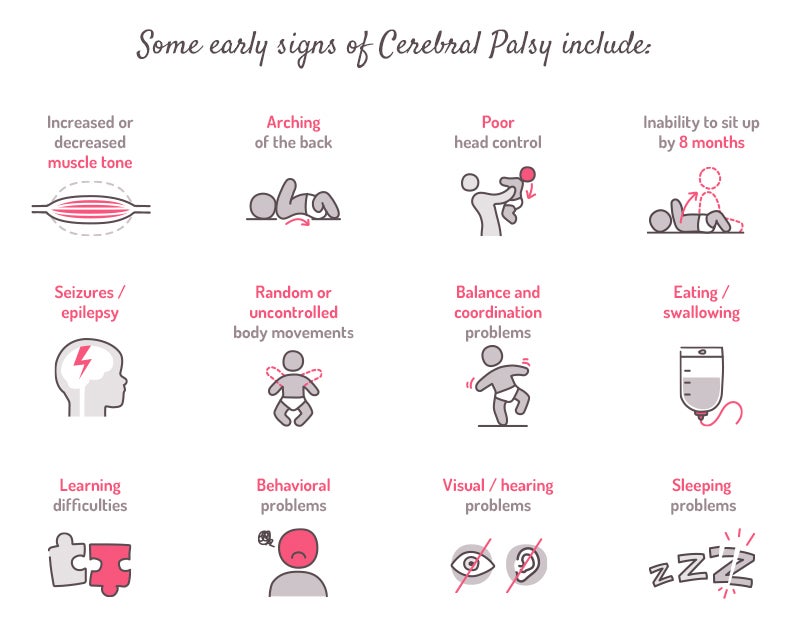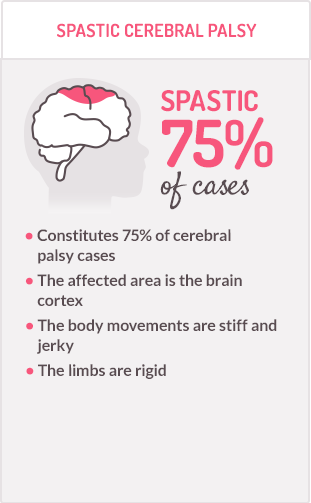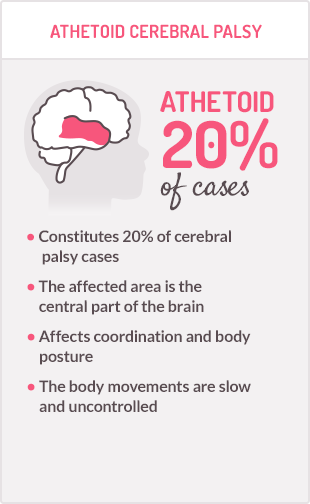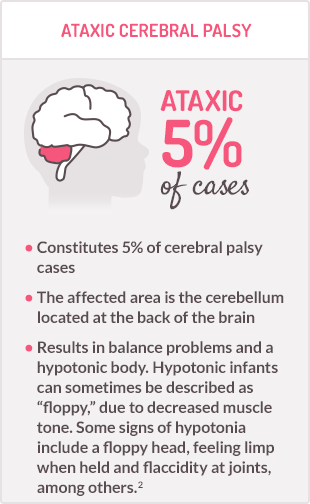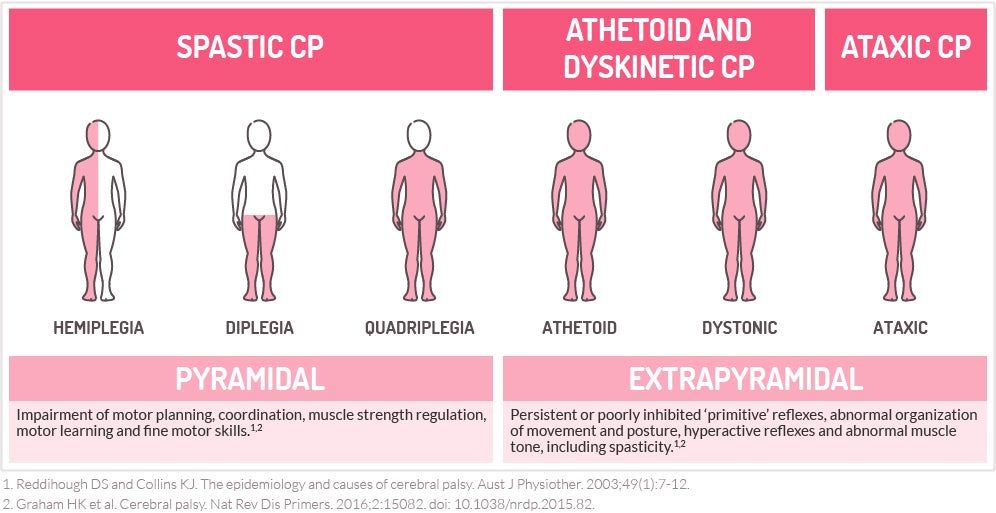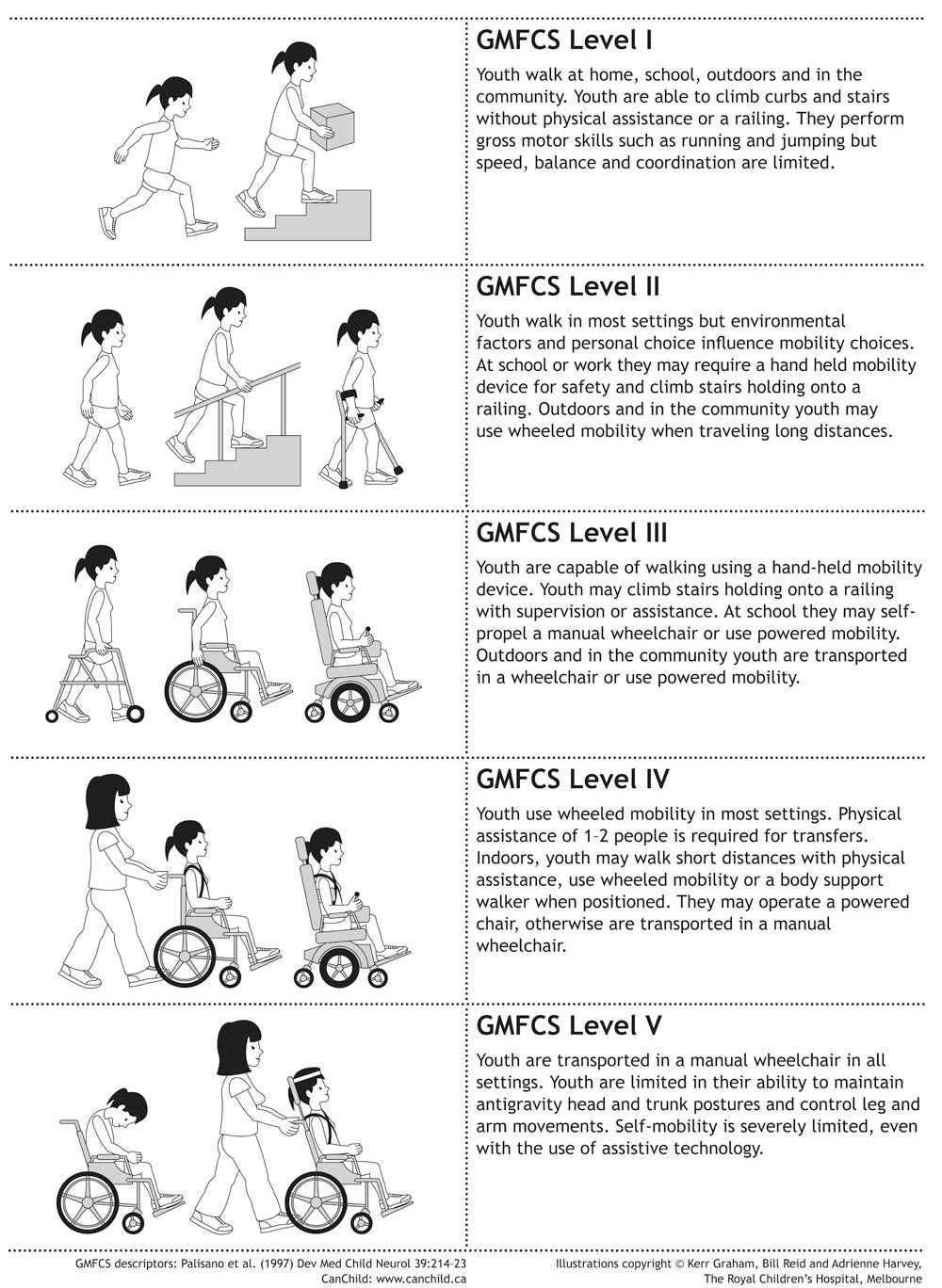Movement and posture disorders result from defect or lesion of the immature brain. Nevertheless, the exact causes of cerebral palsy may remain unknown in a large number of cases.1
It is helpful to classify the known causes according to the timing of the brain insult, whether prenatal, perinatal or postnatal.1
It is also helpful to categorise the causes of CP into three broad groups, related to the effect seen on the brain.2
- Brain damage
- Brain malformation
- Disorders of brain function
Prenatal causes:
Prenatal causes are responsible for approximately 75% of all cases of cerebral palsy.1
In the absence of clear evidence, prenatal causes are assumed to be the cause of cerebral palsy.3-5
However, it is usually impossible to determine the reason and the exact timing of the damaging event.1
Perinatal causes:
Perinatal causes happen during pregnancy.1
Known causes are:1
- Vascular events, demonstrated by brain imaging (for example, middle cerebral artery occlusion)
- Asphyxia (accounts for between 6% and 8% of cerebral palsy cases)
- Maternal infections during the first and second trimesters of pregnancy (rubella, cytomegalovirus, toxoplasmosis)
Less common causes are:1
- Metabolic disorders
- Maternal ingestion of toxins
- Rare genetic syndromes.
The type of cerebral palsy also depends on the gestation period. Interference in brain development during the first trimester is associated with cerebral malformations, such as schizencephaly, a rare birth defect characterised by abnormal clefts lined with grey matter.6
Interference during the second trimester is associated with periventricular white matter damage.6
Interference during the third trimester is associated with cortical and deep grey matter damage.6
Postnatal causes:
Postnatal causes are responsible for 10 to 18% of cerebral palsy cases.1,4,7
Infections, such as meningitis and injuries, are responsible for most cases of post-neonatally acquired cerebral palsy in developed countries.1
Meningitis, septicaemia and other conditions, such as malaria, remain extremely important causes of cerebral palsy.1
The introduction of new vaccines against meningitis will hopefully decrease the number of children with infections and subsequent neurological sequelae.1
Accidental injuries, such as motor vehicle accidents and near-drowning episodes, as well as non-accidental injuries, may result in cerebral palsy.1
Other causes include apparent life-threatening events, cerebrovascular accidents and surgery for congenital malformations.1
There are also certain risk factors that are associated with cerebral palsy, such as:
Maternal factors before pregnancy (delayed onset of menstruation, irregular menstruation, long intermenstrual intervals)
Medical conditions (intellectual disability, seizures, thyroid disease)
Other factors:
- Premature birth, which is associated with half of all cases of cerebral palsy8
- Severe jaundice, which is an established cause of dyskinetic cerebral palsy6
- Iodine deficiency6
References:
- Reddihough DS and Collins KJ. The epidemiology and causes of cerebral palsy. Aust J Physiother. 2003;49(1):7-12.
- Eunson P. Aetiology and epidemiology of cerebral palsy. Symposium: Cerebral Palsy. Paediatrics and Child Health.2016;26:9:367-372.
- Gaffney G et al. Cerebral palsy and neonatal encephalopathy. Arch Dis Child Fetal Neonatal Ed. 1994;70(3):F195-200.
- Holm VA. The causes of cerebral palsy. A contemporary perspective. JAMA. 1982;247(10):1473-7.
- Palmer L. Antenatal antecedents of moderate and severe cerebral palsy. Paediatr Perinat Epidemiol. 1995;9(2):171-84.
- Colver A et al. Cerebral palsy. Lancet. 2014;383:1240-49.
- Pharoah PO et al. Acquired cerebral palsy. Arch Dis Child. 1989;64(7):1013-6.
- Rouse DJ and Gibbins KJ. Magnesium sulfate for cerebral palsy prevention. Semin Perinatol. 2013;37(6):414-6.

